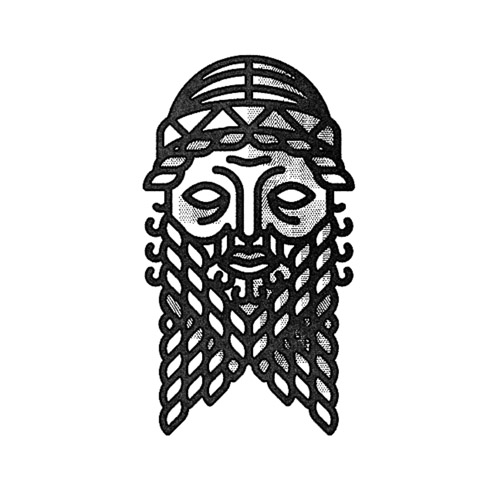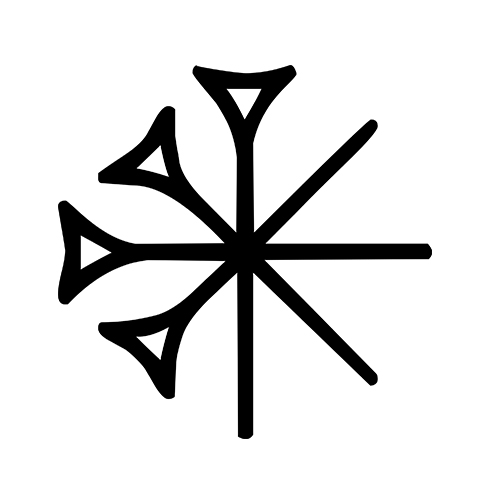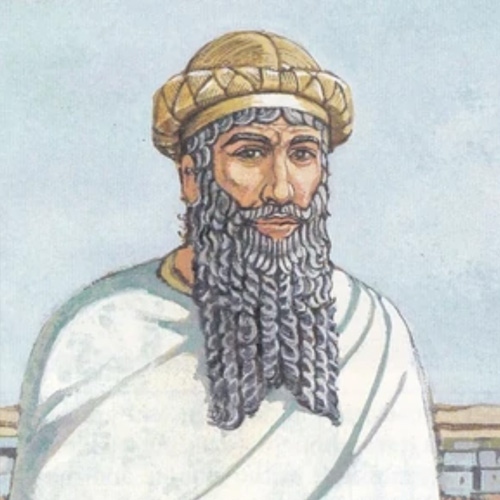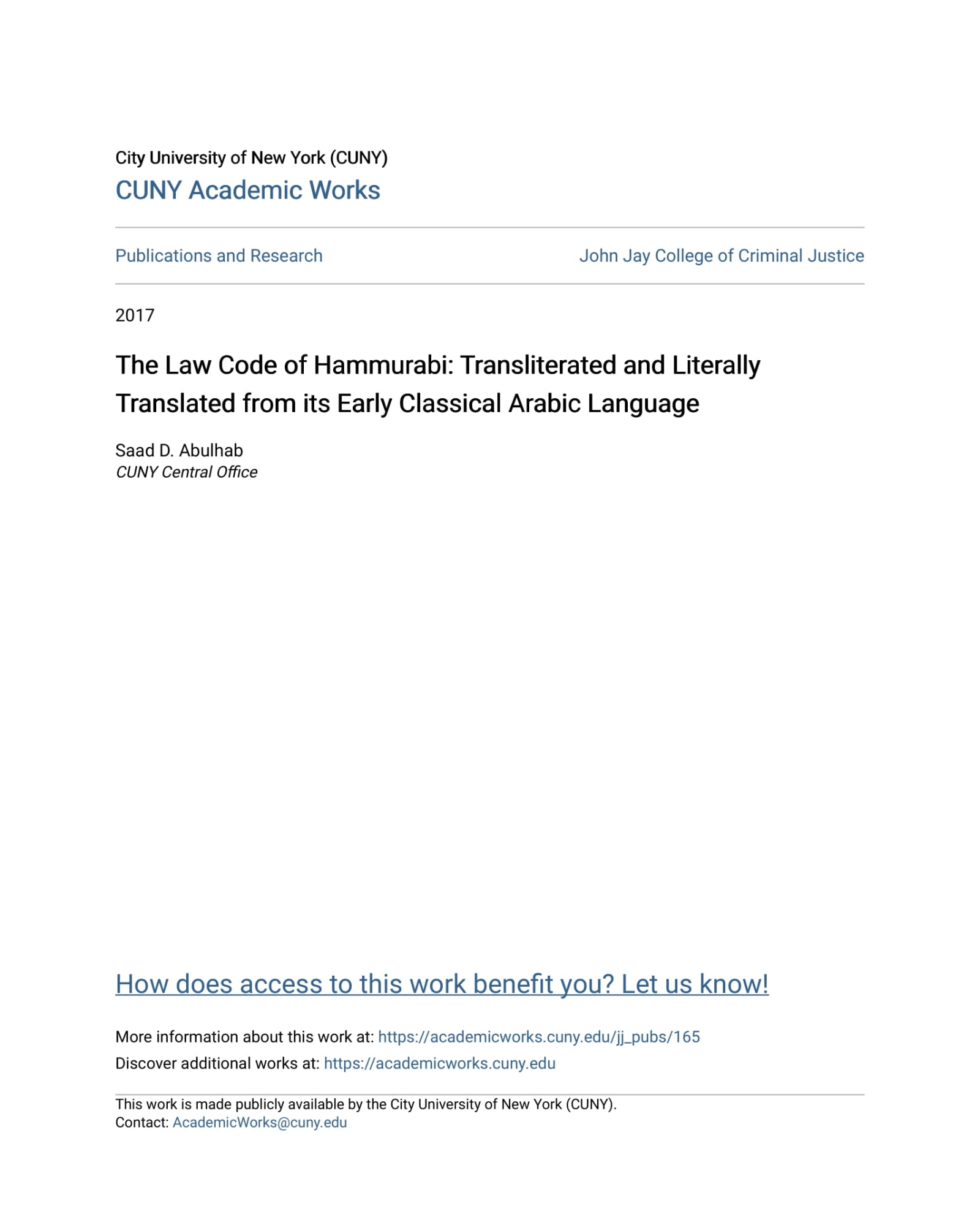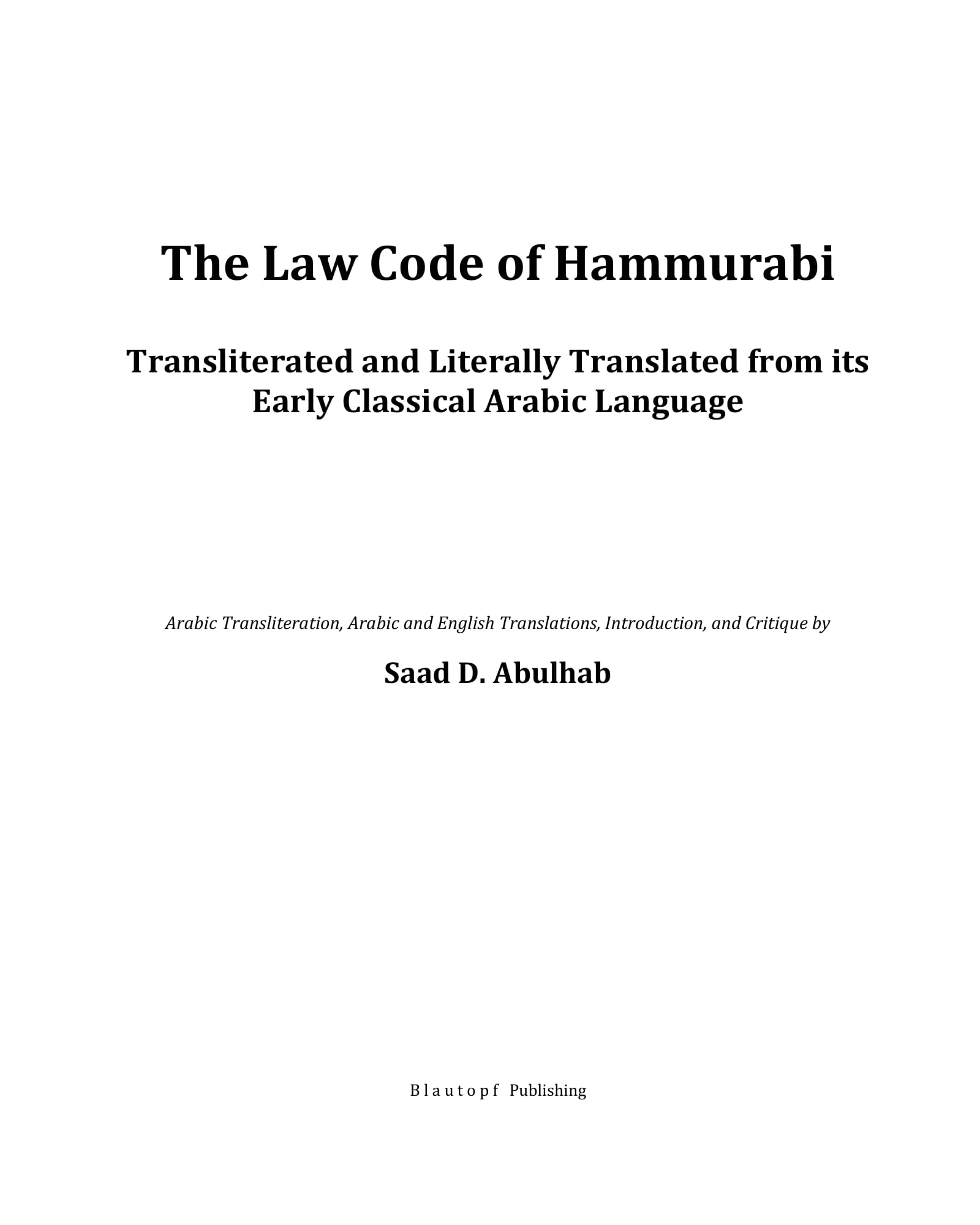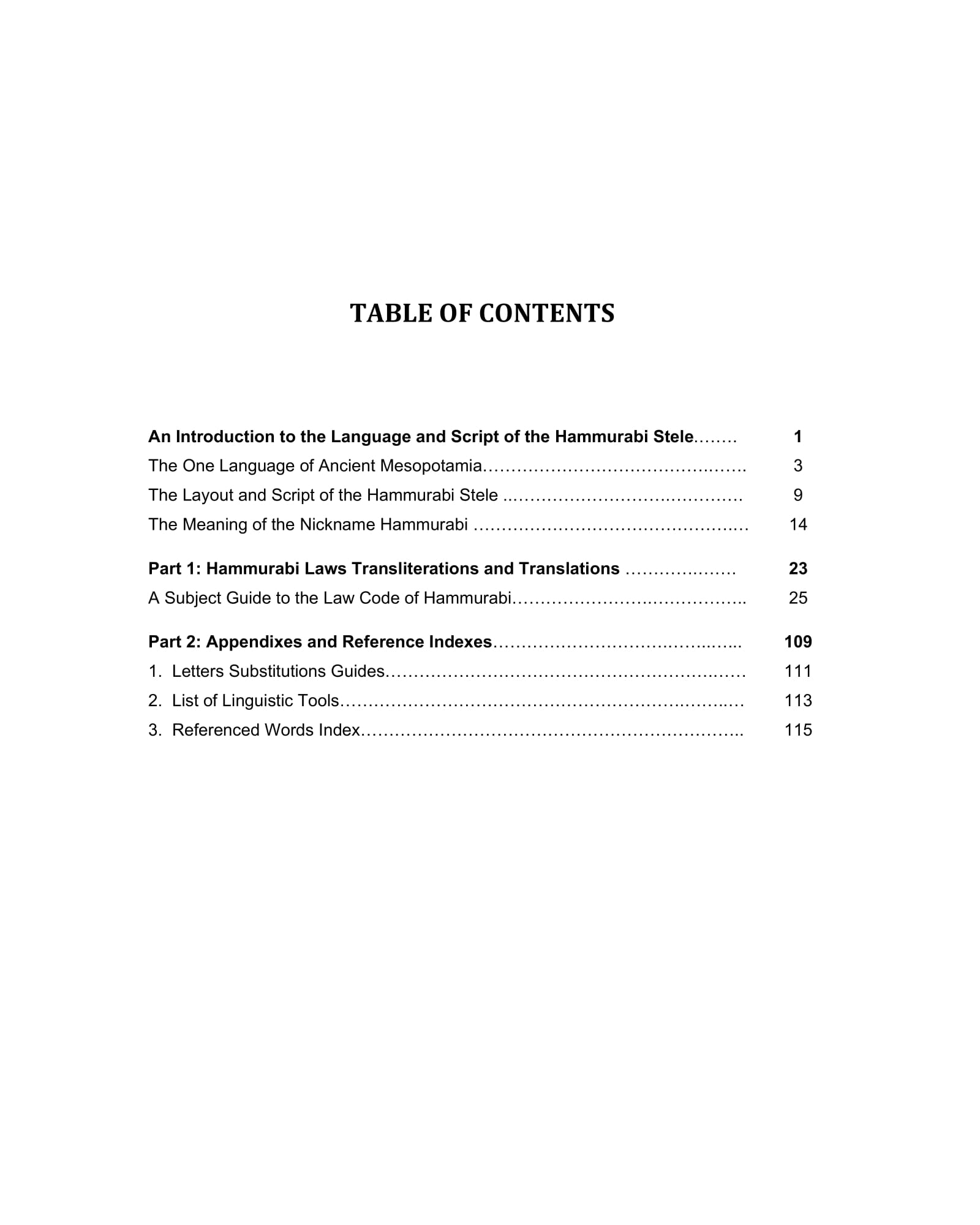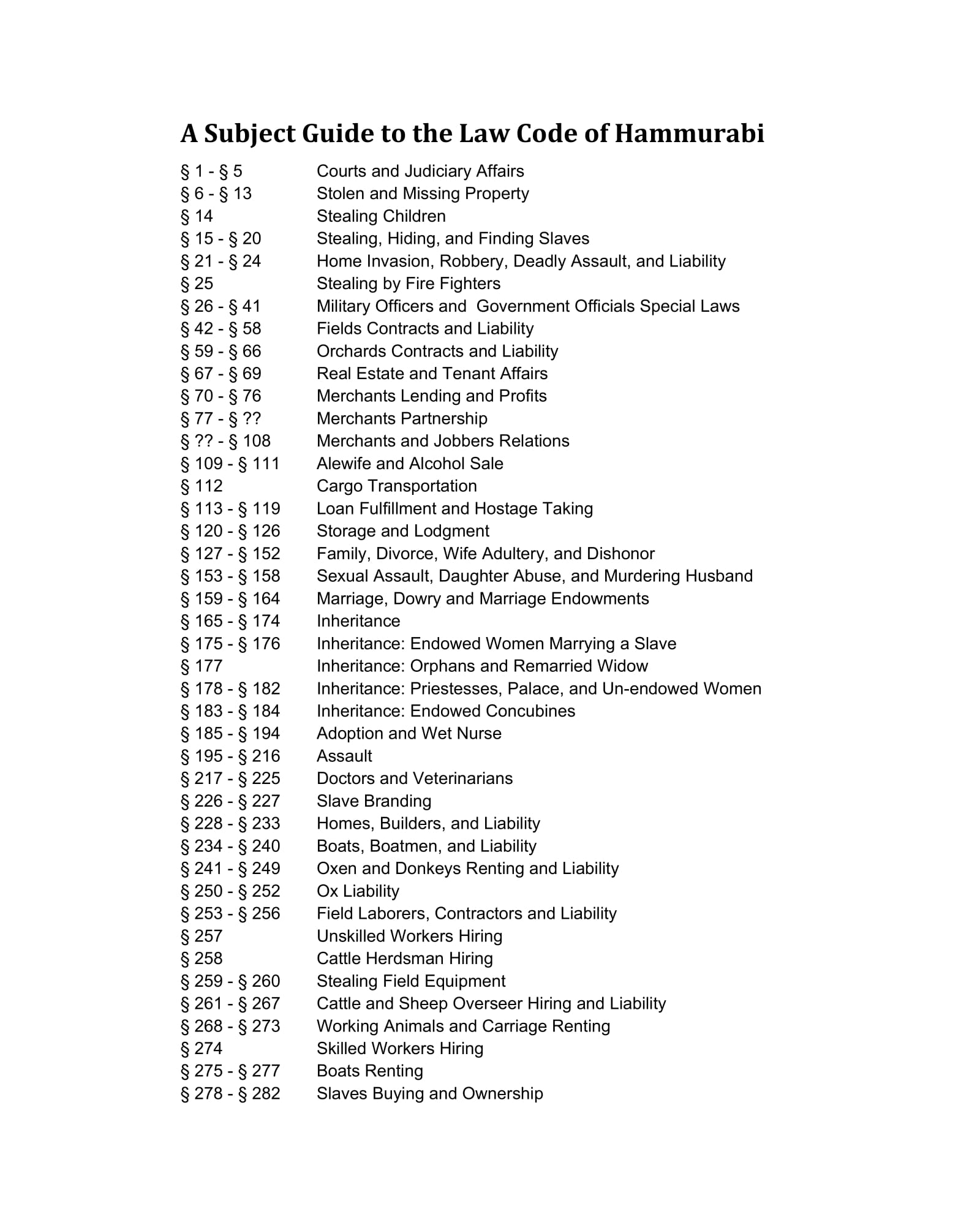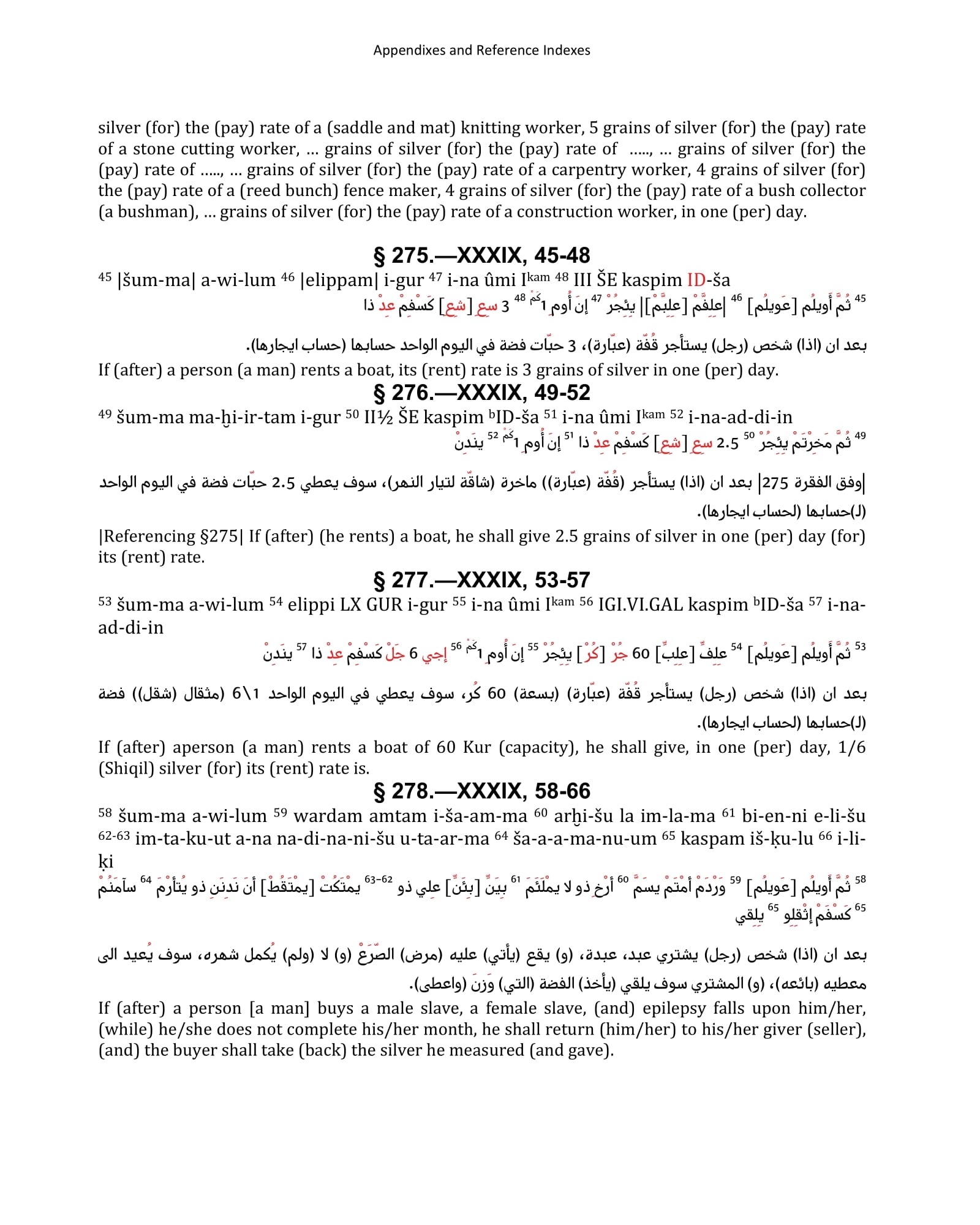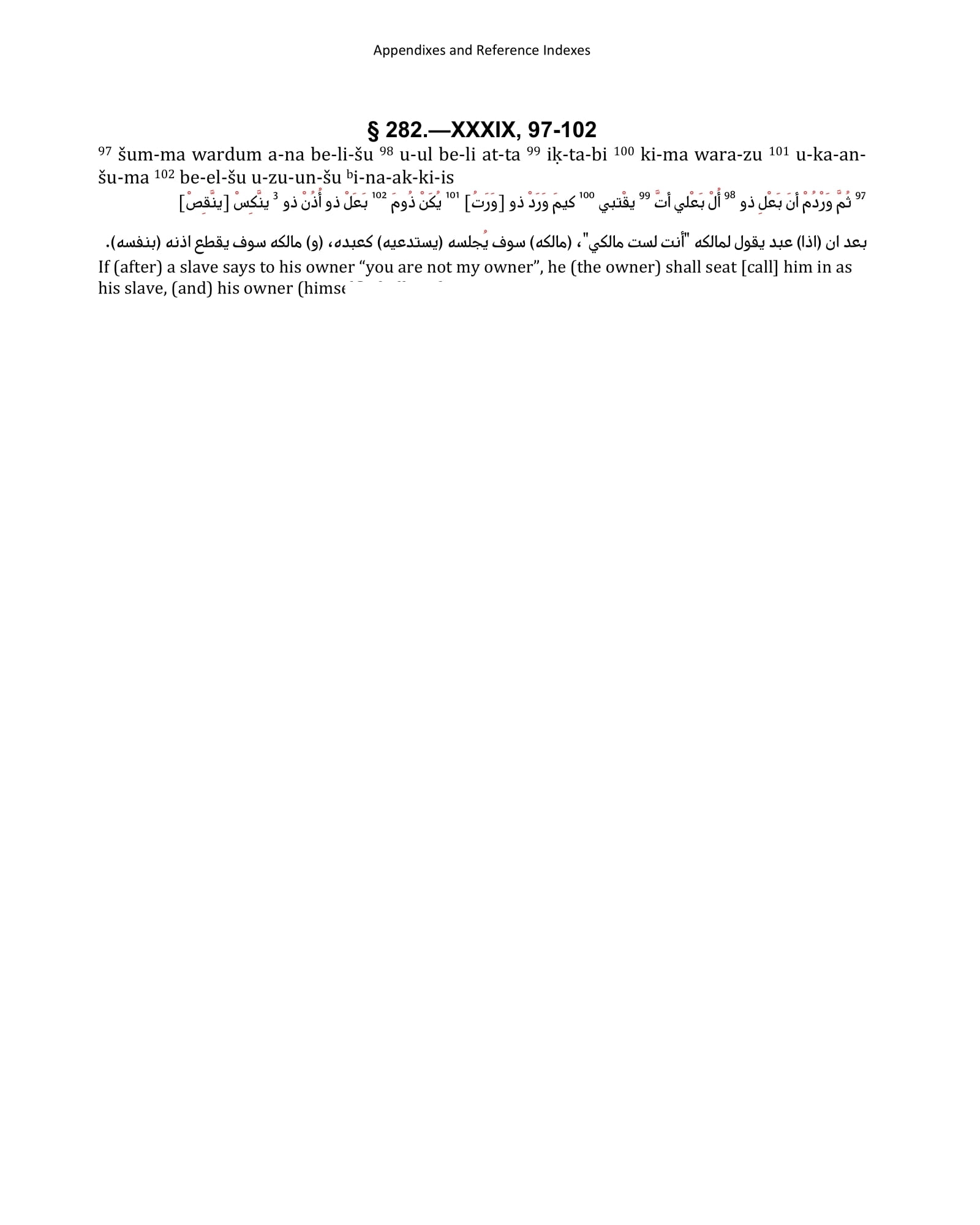About
Abulhab's 2017 publication includes the entire Law Code of Hammurabi. It is collated, transliterated, and includes an English and Arabic translation.
Source: OMNIKA
Access
Read for free
External sources
Primary
Myth
In the prologue, Hammurabi boasts about his intimacy with Marduk while giving him praise. Details about his own accomplishments are also pointed out, especially with respect to the enactment of justice in the world. Next, 282 laws are detailed. Many of them deal with divorce, taxes, medicine, theft, and familial matters. The famous phrase, "an eye for an eye," is also provided. The epilogue explains Hammurabi's authority as an arbiter of justice, as well as his divine authority.
Belief system

The Babylonian religion was practiced throughout modern-day Iraq and the general near east (Mesopotamia) during antiquity. Its chief deity was Marduk.
Myths cited
It looks like only the main myth was referenced in this work.
Belief systems cited
Primary
Basalt Stele (Monument)

The title primarily deals with this artifact.
Artifacts cited
It looks like only the main artifact was referenced in this work.
Other works
Website · 2021
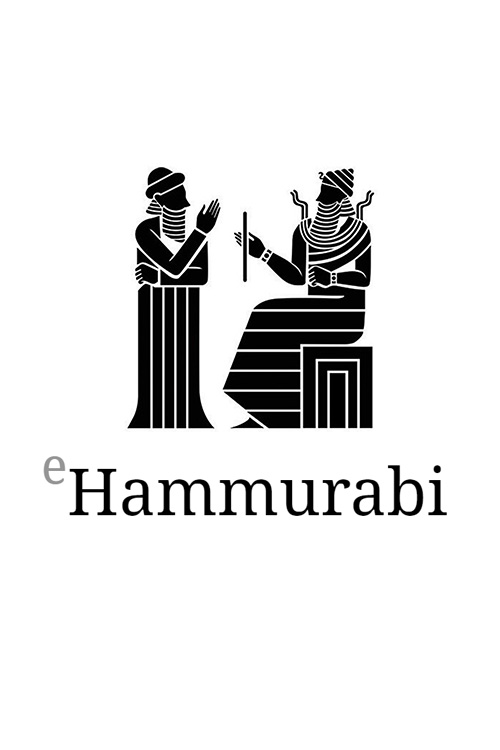
The Electronic Hammurbi website provides a digital version of the Law Code of Hammurabi; and includes the cuneiform signs, transliteration, normalization into Akkadian (Old Babylonian), and an English translation derived chiefly from Huehnergard's standard Akkadian grammar. The website was created by Boban Dedović on February 2021 while he was studying Mesopotamian Law at the University of Chicago, and is operated by the OMNIKA Foundation, a 501(c)(3) nonprofit based in Las Vegas, NV.
Book · 2017
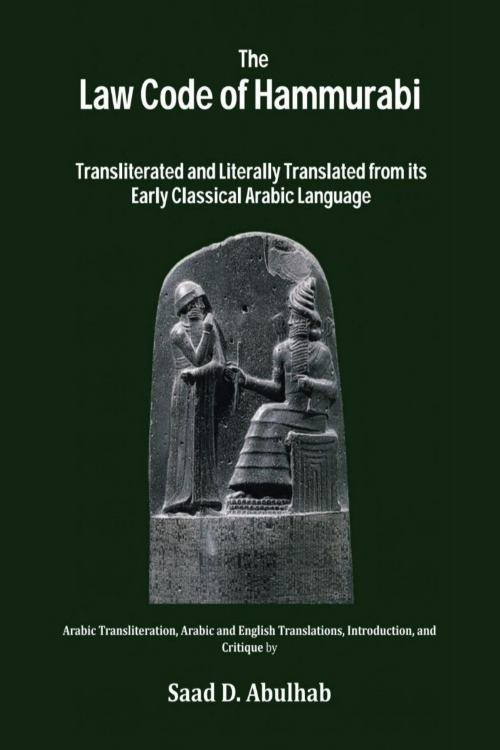
Abulhab's 2017 publication includes the entire Law Code of Hammurabi. It is collated, transliterated, and includes an English and Arabic translation.
Contributor
Cite this work
ChicagoAbulhab, Saad D. The Law Code of Hammurabi: Transliterated and Literally Translated from its Early Classical Arabic Language. New York, NY: Blautopf, 2017.
